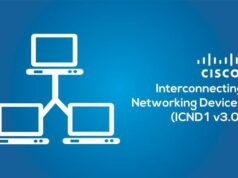TCP Protocol Summary :-
TCP provides a connection oriented, reliable, byte stream service. The term connection-oriented means the two applications using TCP must establish a TCP connection with each other before they can exchange data. It is a full duplex protocol, meaning that each TCP connection supports a pair of byte streams, one flowing in each direction. TCP includes a flow-control mechanism for each of these byte streams that allows the receiver to limit how much data the sender can transmit. TCP also implements a congestion-control mechanism.
TCP provides the following facilities to:- Stream Data Transfer :- From the application’s viewpoint, TCP transfers a contiguous stream of bytes. TCP does this by grouping the bytes in TCP segments, which are passed to IP for transmission to the destination. TCP itself decides how to segment the data and it may forward the data at its own convenience.
Reliability :- TCP assigns a sequence number to each byte transmitted, and expects a positive acknowledgment (ACK) from the receiving TCP. If the ACK is not received within a timeout interval, the data is retransmitted. The receiving TCP uses the sequence numbers to rearrange the segments when they arrive out of order, and to eliminate duplicate segments.
Flow Control :- The receiving TCP, when sending an ACK back to the sender, also indicates to the sender the number of bytes it can receive beyond the last received TCP segment, without causing overrun and overflow in its internal buffers. This is sent in the ACK in the form of the highest sequence number it can receive without problems.
Multiplexing :- To allow for many processes within a single host to use TCP communication facilities simultaneously, the TCP provides a set of addresses or ports within each host. Concatenated with the network and host addresses from the internet communication layer, this forms a socket. A pair of sockets uniquely identifies each connection.
Logical Connections :- The reliability and flow control mechanisms described above require that TCP initializes and maintains certain status information for each data stream. The combination of this status, including sockets, sequence numbers and window sizes, is called a logical connection. Each connection is uniquely identified by the pair of sockets used by the sending and receiving processes.
Full Duplex :- TCP provides for concurrent data streams in both directions.
Hope you like my post TCP Protocol Summary, Please Share with others. For more tips visit my other website www.rumyhacktips.com



